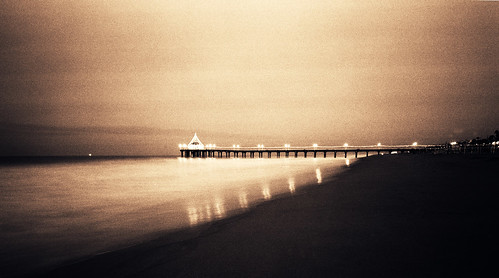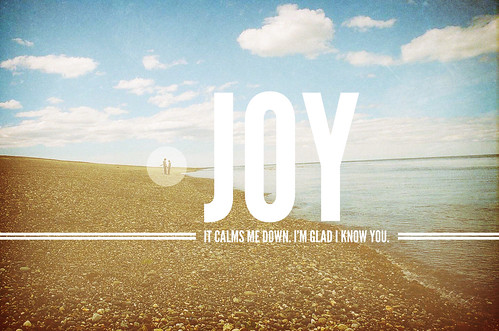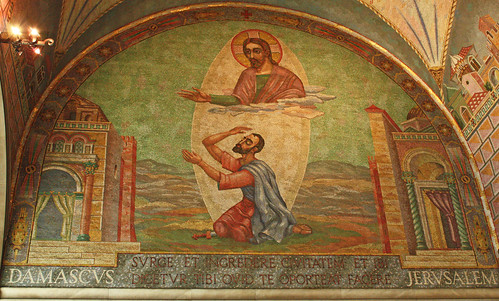Today, we continue with
our Triduum. Tomorrow, Fr Colin Tan, our Regional Superior will preach the
final homily. Despite the best of intentions, Murphy’s Law applies to the
situation in the Parish Office. I live the tension of organised chaos. My
constant companion in the last ten years has been this phantom standing next to
me: “Homily. Homily. Homily. Have you done it?” and as I struggle these days, the
emails, letters and things administrative are stacking up around my table and
as a result another part of me is screaming out, “Clear the mess. Clear the
mess”. It has been like this each time we arrive at Thursday or Friday of the
week.
Today is also the calm
before the storm—the big day being tomorrow. This is the “What shall I do?” in
between Day I and Day III—neither here nor there. I spent the whole day trying
to mould the homily and it has not been easy. Let me take my cue from
yesterday. For many of us, truth is what works. That being the case, our concern
with what works is expressed through the arena of economics, technology,
business and for some the corridors of power. But, I am concerned about the
truth of being because John Paul II did in his encyclical Fides et ratio say this: the neglect of being inevitably leads to
losing touch with objective truth and therefore with the very ground of human
dignity (FE, 90). Nothing is as important to us today as the very talk of
human dignity. One of the reasons we give in to the dictates of political
correctness is because calling a person retarded would somehow injure his
“human dignity”. Indeed, let us ask the grace to return to the truth of being
so that we may live the being of truth.
How can we live the being
of truth?
We need to take care of
our ideas.
A loaded automatic
machine-gun can kill tens of people. But millions die from an idea. For
example, Hitler’s idea of the purity of a race sent millions of Jews, Gypsies,
Slavs and retards/disabled to their death. What we consider to be nothing today
can be the Godzillas of tomorrow! Suffice to say that the basis of our living the
being of truth is founded on the ideas that we have. The trouble with ideas is
the more fundamental they are, the more we seem to assume or take for granted.
Therefore, part of the process of breaching the walls of the entrapped “I” is a
painful need to re-look at some of the fundamental ideas we hold to be
important in life.
One of the most important
ideas of all is the idea of progress. This is my point. In seeing something we
do not see the eye. It is only when we cannot see well that we begin to ask if something
is not right with the eye. To see the eye, we need to look into a mirror. Thus,
the idea of progress is like the eye. We can see progress in leaps and bounds
but we do not really examine its foundation. What is progress? Not only does it
connote an inevitable march but it also carries with it a threat. We invoke the
march of progress to justify almost everything that we want to do. And dare you
stand against its march?
The most optimistic
expression of the idea of progress is technology. You would have heard me speak
about technology here and there and it seems that I am attacking technology,
coming as it were, from an obscurantist position. But, have you heard of Odysseus?
He was the protagonist of the Homeric poem Odyssey which in part was a sequel
to the Illiad. Troy, Trojan Horse and Helen the face that sank a
thousand ships, etc. Odysseus, post the Trojan war, was
making his way home. In his sojourn, he and his men came to a place where the
inhabitants ate lotus-flowers. Subsequently, two men ate of the lotus-flowers
causing them to forget their home-coming.
What is the moral of the
story? Apart from the use of narcotics to induce a mystical state of mind, the
moral here is that we are often enamoured by whatever takes our fancy thus
forgetting our original intention. Progress is like the lotus-flower for it
entrances us. We assume that progress is advancement, amelioration,
breakthrough, development and certainly evolutionary. In the field of
reproductive technologies, the Church is viewed as really behind time or worse
as an enemy of human progress. Yes, we know that under the sway of technology,
mankind has been subject to the tyranny of progress. Progress does not follow
laws, least of all, the law of morality except that it is itself the law
meaning that progress is inevitable.
Is it?
Thus, we need to look
into the mirror. And for many of us, technology will never allow us that
freedom to look into that mirror. Imagine that you can shrink a picture with
the pinch of two fingers or enlarge it by spreading two fingers and how that
would look like to people a hundred years ago. Transport yourself back and you
would be an instant magician. We crave connectivity and I suspect that our
aching to be reached instantaneously is a symptomatic cry of loneliness of the
entrapped “I”. We live in a world, should I say, environmentally hostile world,
where we are not really in control and
technological progress steps in with gadgetry that promises control, feeding our fantasy that all these gadgets will promise us everything
and asks nothing of us. That is why technology has to be sexy.
Some of you know that there is a blog of homilies which are posted
hopefully after each Sunday. I resisted it for a long time but even I succumbed
to the allure of reaching a ready audience. Fr Michael and I joke in this
manner: “Hey, have you worshipped at my temple yet ah”? Well, I usually do not go
to his temple even though sometimes I am amazed at how good a few of my
homilies are. Have to be honest here. The point is not the homilies. The point
is captured by the phenomenon of Facebook. “To like”, as a verb, is now
transformed into a click. Imagine how much we now want to be liked and in the
world of Facebook, we are instant stars or celebrities of our own movies. An
idea, unexamined, may lead us to places we never would think of going and the
temptation of the entrapped “I” in a technologically progressive world, is
narcissism—self-worship.
I love gadgets to tell the truth. I am fascinated by the progress of
technology but I am always conscious that progress is not a journey of
inevitability. We are on a journey somewhere and for Christianity, somewhere is
not even a place. If the Church is the Body of Christ, then somewhere is where
the Head is. If we are to be “rescued” from the lotus-eating stupor of
progress, then it requires that we step back to examine and to reflect through
critical thinking.
Critical thinking is needed but not of the kind that we are used to—critical. Or
the kind of conspiratorial thinking we feed on. Critical thinking is concerned
with precision when we define things, even if it should border on pedantry.
Why? Ideas have grave ramifications. Otherwise, the entrapped “I” of yesterday’s
homily will become the individual of relativism.
How are we to achieve
critical thinking? The use of reason, informed reason and not just practical
reason, is one. Reason here is not the reason of the Enlightenment but rather
the reason guided by faith because faith and reason are not mutually exclusive.
There is also the need to widen our knowledge of how ideas came about and this
is done through a careful historical research. What is important to note about
critical thinking though is that it is as much a methodology as it is an
attitude.
In this regard, I must
say that the Society of Jesus is to be thanked and loved for whatever that I
have shared with you. Six years acquiring the degrees in philosophy have not
gone to waste. An attitude that I think is important is to recognise and accept
that truth can be approximated. In speaking, I am not known for subtlety
because I suffer not from “foot and mouth” disease but from “foot-in-mouth”
disease. But, listen again to the language used or better still, read the
language employed. Of course, some slip-ups may take place but the language
used in almost all the homilies is propositional. In what sense are they
propositional? I often begin my sentence with “maybe” or “perhaps”. Underneath
this seeming uncertainty is “an” assumption, not “the” assumption, that “I do
not possess the truth”. Instead, I am a poor servant of the truth. Therefore,
the philosopher Habermas comes to life. He speaks of the “unforced force of the
better argument”. Here, you detect an assumption which is important: There is
truth to be known. And every encounter we have should lead us into the light of
truth.
Why is such an attitude
especially in dialogue important in the light of truth? This attitude is
important because the person is located in community. You see our idea of person is “individualistic”.
We conjure up in our head a discrete individual with his/her range of powers
and everything else. However, the word “individual” even though it suggests
distinctiveness, in truth, it is not separated from the community. The very
idea of an individual really leads us back to the community. For example, one cannot
say, “I am alone” without saying it to someone else. Even the very thought of
“I am alone” presupposes that you are having a conversation with someone in the
head. Thus, for an individual to be totally discrete or distinct he must remain
silent.
But, silence is not a
calling. It may be an option because we definitely need it in order to hear God
and a large dosage of it might just be the remedy the soul needs. Still, our
calling, in the midst of progress, is to re-ground or re-establish the
individual in the community. Even the most remote or archaic hermitage of monks
or nuns are in a way linked to the community. As long as they pray the Divine
Office, they are part of the Church.
There is a subtle shift
here. The community is Church. Here, the community is not an amorphous idea
that is romantically defined according to the principles of egalitarianism or
if you like, a “kumbayah” non-threatening community that makes no demands on
the individual. This form of community as we conceive of is basically
sociological or political organised along principles of functionality. Whereas,
the Church, as community par excellence, makes demands on us because she is by her
very nature hierarchical because she is markedly sacramental. How? Christ and
the Church are variously described as bridegroom and bride, head and body.
Apart from the spousal or the anatomical analogy we use to describe the
relationship between Christ and the Church, there is also the sacramental
definition. She, the Church, is the sacrament of Christ and therefore as a
sacrament, she is also hierarchical and as such, she makes demands on us. And
as a corollary, there is no such thing as Christ without the Church. In being
hierarchical, now you know why in the Catholic Church, there is only one Pope.
Perhaps you can see,
there is more than meets the eye in the renovation of the Church. All the
beauty of the Church points us in the direction of Christ the Head who is no
less than the definition of beauty Himself. Not the shallow cosmetic beauty
offered through physiological augmentation technology but beauty which is cosmological
(heavenly) and therefore aesthetically pleasing. This is the journey which I
have committed myself to in the last ten years and wish to share with you. It
is a journey that requires that we make moral judgement as well as decisions
instead of being carried along the inevitable tsunami of technological
progress. In a way, we must make the crucial decision that we want to become a
part of something larger than ourselves.
Now you understand why I
am unabashedly Catholic. There is a universality about the Catholic Church
which transcends the individual but not a kind of transcendence which
patronises the individual as if it were something to be rid of. No, amidst the
struggles that people have of Church, I behold the beauty of the Church
reflected in her teaching, in her governance and certainly, in her worship.
Therefore, I desire with every fibre of my being to be a servant of the
Church—Holy Mother Church.
I am coming to the end
now. And I have to sort of wrap up my part of the Triduum for tomorrow, it will
be Father Colin Tan. Let me tell you that it is no fun doing this because my
natural instinct has been basically why to work when you can skive. However,
let me just recap some of the points that I have made thus far so that I may
land.
There is objective truth,
a concern with being, so that our ethics may be expressions and reflexions of
the truth of being. To get to the truth of being, we need to be critical of the
assumptions that we have. I made a long excursus on the idea we have of
progress and how progress is not really the be all and end all of existence, no
matter how captivating it may be. I ground the whole search for truth in the
community and the community in our context is Church. The Church is our Holy
Mother whom we all sometimes take for granted and I see how everything I have
done thus far has been to serve she who is none other than the Bride of Christ.
It now makes sense that I am a Jesuit for the Society of Jesus was founded for
the sole purpose of serving the Lord alone and His bride, the Church under the
Roman Pontiff, his Vicar on earth.
 This is the
final instalment of a four-part homily. In the 1st instalment, I
spoke of salvation in terms of the "already and not yet". Christ already reigns
through His Church but all the things of this world are not yet subjected to
Him. Even if that may be the case, the Vigil Mass was considered joyful because we were anticipating
the coming of Christ. We dared to celebrate because we acknowledged and trusted
God’s providence. The focus of the 2nd instalment was on the "already"
whilst we kept the "not yet" at bay. We broke into the midnight celebration of
Christ’s birth. We lingered, marvelled and rejoiced at the birth of our
salvation. In fact, the appropriate posture was silence before the manger of
the helpless Child Jesus. Our reverential silence allowed the mystery of God
made Man to emerge. The 3rd instalment explained the significance of
the ox and the donkey in the imagination of the crib. They were there because
Isaiah spoke of the draught animals as the ones who recognised their owner and their
master’s crib.
This is the
final instalment of a four-part homily. In the 1st instalment, I
spoke of salvation in terms of the "already and not yet". Christ already reigns
through His Church but all the things of this world are not yet subjected to
Him. Even if that may be the case, the Vigil Mass was considered joyful because we were anticipating
the coming of Christ. We dared to celebrate because we acknowledged and trusted
God’s providence. The focus of the 2nd instalment was on the "already"
whilst we kept the "not yet" at bay. We broke into the midnight celebration of
Christ’s birth. We lingered, marvelled and rejoiced at the birth of our
salvation. In fact, the appropriate posture was silence before the manger of
the helpless Child Jesus. Our reverential silence allowed the mystery of God
made Man to emerge. The 3rd instalment explained the significance of
the ox and the donkey in the imagination of the crib. They were there because
Isaiah spoke of the draught animals as the ones who recognised their owner and their
master’s crib.







